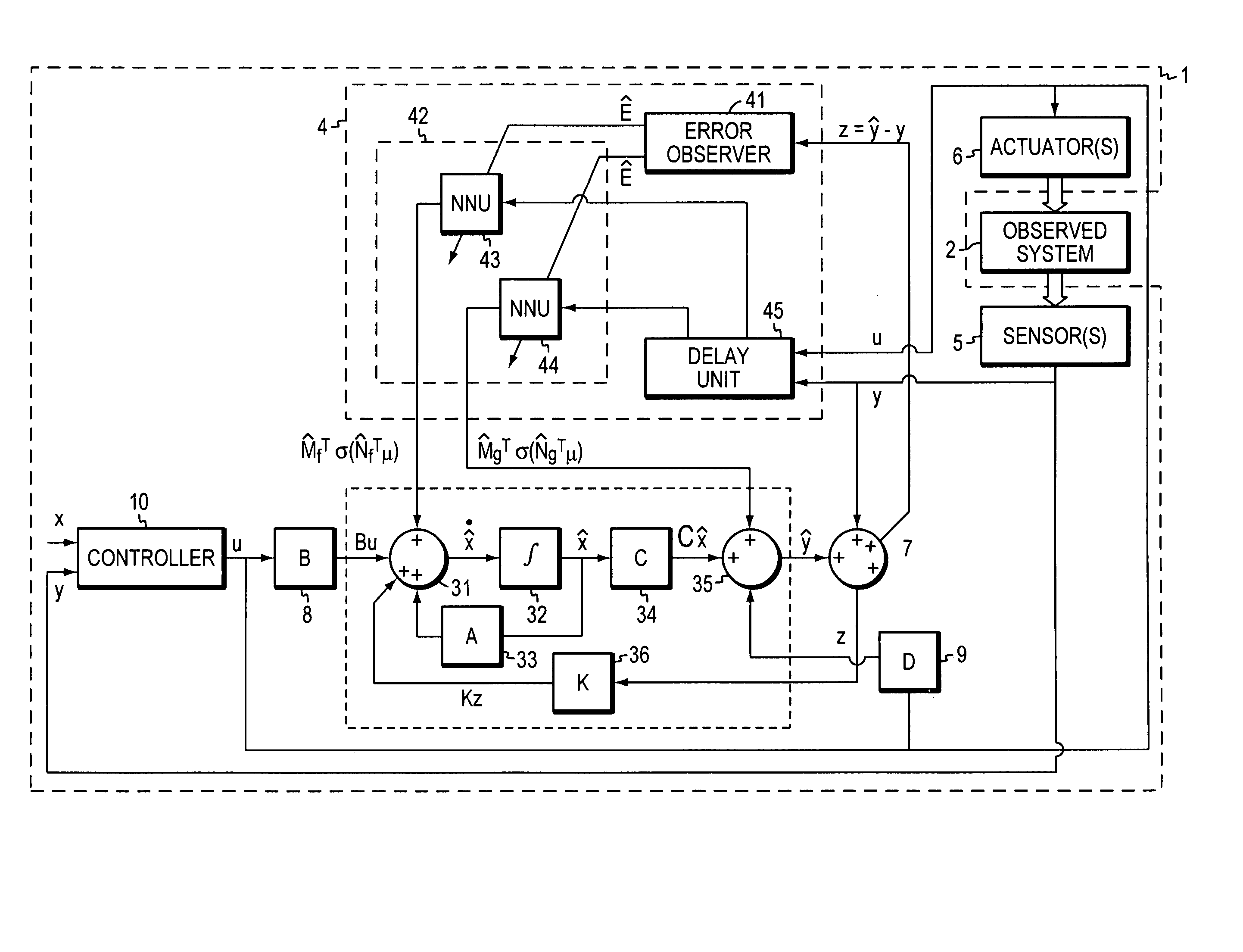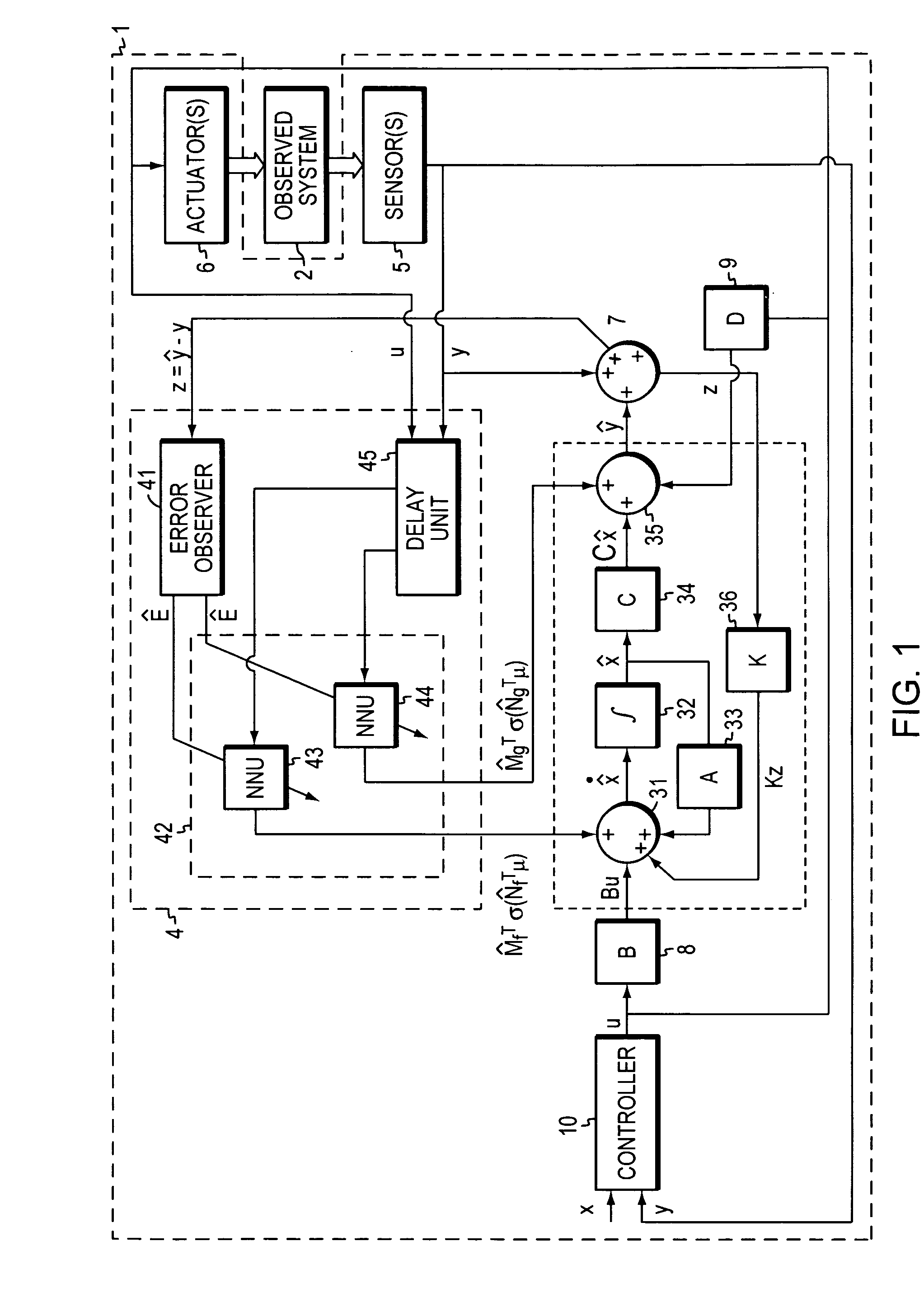Adaptive observer and related method
a technology of observer and observer, applied in the field of adaptive observer, can solve the problems of limiting the applicability of the domain of filter needed to satisfy the spr condition, limiting the adaptive law of both approaches to adapting only the nn output layer, etc., and achieve the effect of improving the performan
- Summary
- Abstract
- Description
- Claims
- Application Information
AI Technical Summary
Benefits of technology
Problems solved by technology
Method used
Image
Examples
Embodiment Construction
[0017] The present invention now will be described more fully hereinafter with reference to the accompanying drawings, in which some, but not all embodiments of the inventions are shown. Indeed, this invention may be embodied in many different forms and should not be construed as limited to the embodiments set forth herein; rather, these embodiments are provided so that this disclosure will satisfy applicable legal requirements. Like numbers refer to like elements throughout.
GLOSSARY OF TERMS
[0018] As used herein, the following terms have the following definitions:
[0019]‘Actuator’ can be virtually any device capable of affecting the state of an observed system to control a degree of freedom thereof. Such actuator can be a part of an aircraft, spacecraft, vehicle, ship, robot, machine, or other system to be tracked.
[0020]‘Control Cycle’ refers to a single iteration or execution of a software program by a processor implementing a tracking system in generating the various signals r...
PUM
 Login to View More
Login to View More Abstract
Description
Claims
Application Information
 Login to View More
Login to View More - R&D
- Intellectual Property
- Life Sciences
- Materials
- Tech Scout
- Unparalleled Data Quality
- Higher Quality Content
- 60% Fewer Hallucinations
Browse by: Latest US Patents, China's latest patents, Technical Efficacy Thesaurus, Application Domain, Technology Topic, Popular Technical Reports.
© 2025 PatSnap. All rights reserved.Legal|Privacy policy|Modern Slavery Act Transparency Statement|Sitemap|About US| Contact US: help@patsnap.com



